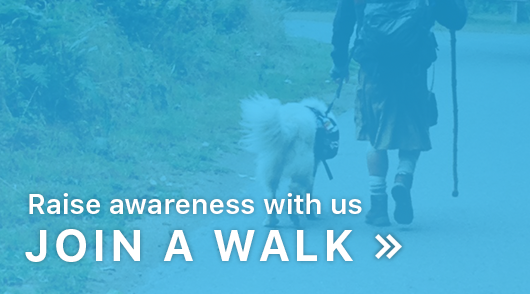
(by Sally Writes)
Separation anxiety is a common behavior disorder in dogs, with veterinarians at the Illinois College of Veterinary Medicine stating that it affects between 20% and 40% of all dogs. The main trigger for pooches facing this condition is the absence of ‘their person.’ When they miss you, they can engage in many destructive behaviors that can include crying, urinating indoors, barking, chewing on furniture, drooling, and being reticent to eat. You will notice that your pet is anxious from the moment you engage in typical activities like putting your coat and shoes on, or grabbing your keys. If you think your dog has this condition, the first step should undoubtedly be a visit to your vet.
Why Is A Vet Visit Important?
Some behaviors you might associate with separation anxiety – for instance, appetite loss or excessive drooling, many not be caused by this disorder at all. A visit to the vet is wise, since other conditions that can result in these behaviors can then be ruled out. Urinary infections, for instance, can result in incontinence, so if your dog is peeing inside, it might not be separation anxiety after all.
Training At Home
If the anxiety is minor, or if you and your vet decide to try out training without any medication, desensitization is one place to start. The key is for your dog to understand that when you leave your home and shut the door behind you, you will always return. If you can, take a few days off so you can work on your training at leisure. Desensitization involves leaving the home for just a few seconds then coming back inside, increasing the amount of time you are away little by little, until your dog realizes he is not in fact going to be alone forever. Training can take several weeks, so be patient, and bring lots of treats to reward good behavior.
Doggie Entertainment
If you use subscription boxes to regularly provide entertainment for your pooch, pick those that offer lots of toys your dog can gnaw on to his heart’s content, so that he doesn’t target furniture when you are away. Buy food mazes so that your dog keeps busy while he’s trying to get to his kibble (make sure he cannot just turn the maze over and access all the kibble immediately!) Check out high tech dog toys that throw balls or that have cameras that allow you to interact with your dog while you’re at work. Some gadgets even allow you to give your dog a treat if he comes to the camera or performs a trick when you ask him to!
What Treatments Are Available?
If anxiety is severe and/or if training does not work, your vet may recommend treatment. Some are natural and homeopathic; some are made with gentle ingredients like chamomile flower and L-tryptophan, which have no side-effects. Another product that has received good reviews from some dog owners is CBD oil for dogs; this product is used for other conditions as well, including arthritis. Before administering any medication to your dog, however, it should be okayed by your vet first.
If your dog has been displaying anxious behavior, take him to your vet to rule out other health issues. Consider trying to train your dog to get used to periods of alone time, and give him lots of toys and treats to keep him occupied when you’re away. If all else fails, consider treatment, including natural solutions with no side effects.
Photo by Ryan Stone on Unsplash








